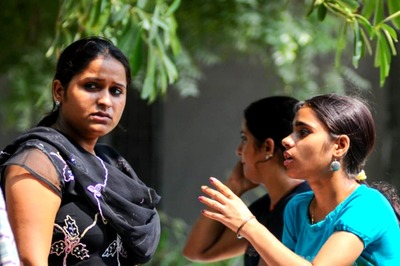
views
New York: American children aren't the only couch potatoes with nearly one third of children globally spending three hours a day or more watching TV or on computers, according to study of over 70,000 teens in 34 nations.
From Argentina to Zambia, Regina Guthold of the World Health Organization in Geneva and her colleagues found most children aren't getting enough exercise and it made no difference if they lived in a rich or a poor country.
"With regards to physical activity levels, we did not find much of a difference between poor and rich countries," Guthold told Reuters Health. "Growing up in a poor country does not necessarily mean that kids get more physical activity."
The study, published in The Journal of Pediatrics, looking at 72,845 schoolchildren aged 13 to 15 from North and South America, Asia, Europe, and the Middle East. The children were surveyed between 2003 and 2007.
The researchers defined adequate physical activity as at least an hour of exercise outside of gym class at least five days a week.
Children who spent three or more hours a day watching TV, playing computer games, or chatting with friends -- aside from time in school or time spent doing homework -- were classified as sedentary.
The researchers found only one quarter of the boys and 15 per cent of the girls were getting enough exercise by these definitions.
A quarter of boys and nearly 30 percent of girls were sedentary and didn't get enough exercise with girls less active than boys in every country aside from Zambia.
Uruguay had the highest percentage of active boys, at 42 per cent, while Zambia had the lowest, at 8 per cent.
Girls from India were the most active, with 37 per cent meeting exercise recommendations, while girls from Egypt were the least active, with just 4 per cent getting adequate exercise.
Children in Myanmar were the least sedentary, with 13 per cent of boys and 8 per cent of girls classified as sedentary. The most sedentary nations were St. Lucia and the Cayman Islands, with 58 percent of boys and 64 percent of girls spending at least three hours a day in sedentary activities.
While the study didn't look at the reasons behind the lack of physical activity in various nations, Guthold speculated that urbanization could be a factor as well as access to cars and TVs.
She said schools can help children become more active by having physical education classes and educating students about the importance of exercise.
Adding lanes for bicycles, pedestrian crossings and other changes to promote walking and biking to and from school could help too, she added.
"Even with the limitations that questionnaire data (suffer) from, I guess it's pretty safe to say that we have a huge problem with physical inactivity among schoolchildren around the globe and that we should take action," said Guthold.



















Comments
0 comment